(IPS) – The dangerous state of global climate has reached a new low as a World Metrological Organisation (WMO) analysis reveals. It confirms a known obvious: human activities continue to worsen conditions that have changed our planet’s climate.
Most distressing is that ‘there is a 66 per cent likelihood that the annual average near-surface global temperature between 2023 and 2027 will be more than 1.5 degrees Celsius above pre-industrial levels for at least one year.’
With under five years before the much dreaded 1.5 degrees set by the Paris Agreement becomes a reality – and with it ‘a 98 per cent likelihood that at least one of the next five years, and the five-year period as a whole, will be the warmest on record’ – politicians and policy-makers have received the loudest definitive clarion call that should induce urgent and fundamental changes in approaches to mitigating and adapting to climate change impacts.
It had been known for decades that the African continent is highly vulnerable to such impacts as drought, flooding and heatwaves. What remains unknown but can be reasonably discerned is the scale of human catastrophe and its resulting global impacts that are certain to happen should – so far unsuccessful – climate governance approaches remain unchanged.
Already observed impacts of climate change
It is now reasonable to conclude that climate actions that should have been undertaken at a continental scale will not be completed within five years to avert climate change impacts. Over decades, predictions in earlier International Panel on Climate Change (IPCC) reports have already become a reality.
Its latest special report – focused on the 1.5 degrees threshold – details climate impacts that have claimed lives and livelihoods among Africans who contributed the least to climate change. Six climate impacts assessed between ‘medium, high and very high confidence’ such as displacement, heat and losses in agriculture and crop production, are no longer just predictions — and are certain to further increase within the next five years.
A certain outcome of this will be increases in false solutions, such as techno-scientific babble to spray silver iodide into the atmosphere to create rain, as well as inflame nationalistic policy responses, such as the British government’s current inhumane policy to return a growing number of people fleeing from the most vulnerable continent to climate change impacts.
Any effort, worthy of being considered serious, to avert further callous suffering and wanton waste of lives across Africa during the next five years, must aim at implementing climate mitigation and adaptation projects at a scope, continental scale and rate that surpasses the frequency of recent environmental disasters.
Before the onset of these WMO’s predictions, those most responsible for climate change saw and mostly ignored as distant problems, the starvation in Ethiopia, catastrophic drought in Kenya and cyclone in Zimbabwe that affected millions, killed thousands and, since 2021, displaced some 1.5 million searching for food and water in Somalia.
But such a short-sighted understanding of cascading impacts resulting from extreme weather and environmental conditions induced by a changed global climate will only worsen the situation. Further, beyond five years, social outcomes across Africa would, in the long-term, represent persistent social pressures, including from those with the courage to maintain a moral sting on the conscience of politicians in developed countries.
A most certain of those is the changing demography of Africa, as ‘more than half of global population growth between now and 2050 is expected to occur in Africa.’ In sub-Saharan Africa, the population is projected to grow from 258 million in 1984 to over 1.6 bn in the next seven years. It would be a natural outcome that these lives will relentlessly escape barren farmlands and flood communities that no longer sustain their lives for those in Europe and elsewhere.
Reports of thousands of lives lost at sea should signal to politicians that risks faced by those seeking refuge by crossing the Mediterranean Sea, using over-crowded and rickety boats, are not sufficient deterrence to outweigh their perceptions of protection in developed countries that are comparably more adapted to climate change impacts and with mitigation solutions.
Another reason for urgent changes to addressing climate change is that assistance to developing countries to aid humanitarian disasters are constrained by inflation in developed economies, the political climate in donor countries and unforeseen developments, such as the recent Covid19 pandemic.
And so, within the next five years, the resulting environmental disasters from a world warmed to 1.5 degrees, coupled with national economic pressures in developed countries such as inflation, which reduces foreign aid, inconsistent national policy-making from short-term political cycles and misplaced national priorities on overseas development assistance (ODA) – such that saw Somalia ranked tenth on a list of top-ten recipients of gross ODA between 2020 and 2021, during the same period the country was experiencing a profound humanitarian crisis – will contribute to creating a global humanitarian catastrophe perhaps not seen since the end of the Second World War.
The need for large-scale transformations
Unlike Western Europe, which was rebuilt on the Marshall Plan, a similar plan may be unnecessary for Africa, had developed countries honoured promises on climate change assistance. But climate finance promises to honour yet more broken promises have not stopped African countries’ from increasing their resilience and reducing the continent’s high vulnerability to climate change impacts.
They continue to play by UNFCCC rules and have deposited plans, including plans to implement plans, to mitigate and adapt to climate change. But as the UNFCCC has found, virtually all National Determined Contributions, from some 100 countries, ‘need international support for technology development and transfer to implement.’
Since as many countries have been waiting for decades for such support, it is reasonable to suspect the finance needed will not arrive in less than five years. And so, national efforts to protect lives across Africa have largely come to nought, while emissions outside the continent continue to rise, while ironically, the premature death of ‘King Coal’ still makes headline news in the foreign press.
Keeping that failure in mind, if the Paris Agreement could still be lauded as the greatest achievement on climate change, then the accord’s approach to implementing its solutions is its weakest. Whether it’s implementing mitigation and adaptation projects or transferring technologies from developed to developing countries, the inflated role and relevance of money to realise these solutions reduce the accord’s potential from a practical instrument to a simple conceptual document.
Its finance framework contributes to gestate and birth a marketplace of climate finance funds, greenwashing scams and initiatives informed by neoclassical free-market logic that, as yet, have failed to reduce global emissions. But where the framework should matter most – to stimulate climate finance flows to developing countries – remains an unmet need.
Yet, Africa’s persistent high vulnerability to climate change impacts isn’t for lack of climate finance, but one of access to money. One has only to observe that Africa has historically been at the bottom rung of recipients of public and private sector finance, such as foreign direct investments and overseas development assistance.
Climate finance, which must freely flow to fund renewable energy and climate-resilient projects, has followed suit. Until 2050, the continent would need, yearly, $240 bn to implement climate mitigation and adaptation measures, but received $15.7 bn in loans in 2020. It is more critical now than ever to understand that private financial markets are unsuitable for solving public problems.
Economic power has historically been centralised in developed countries and climate change impacts will not honour this historic disparity.
Decarbonising African economies implies societal, sectoral and infrastructural transformations at a scale unknown to human history. Yet, knowledge and technologies exist today to make this transformation a reality. But this evidently provides no assurance for their use, mainly because of the insistence that such transformation should be accomplished on the basis of neoclassical market logic.
Aside from such reasoning reflecting a certain measure of cognitive dissonance, it also suggests a wilful and callous condemnation of vulnerable lives to more death and unnecessary suffering. A practical and perhaps only option now is to consider implementing climate solutions outside the free economic market.
The second is to socialise these solutions. This henceforth should mean that decisions on how to provide electricity to hundreds of millions who’ve been living in perpetual darkness at sunset for generations, provide drought-resistant crops to those in barren farmlands and supply early warning systems to prevent deaths from extreme weather, must no longer be informed by neoclassical economic dictates. By orienting climate solutions towards social goals, human societies may minimally survive in a world warmed up to 1.5 degrees.
Michael Davies-Venn is a public policy analyst and communication expert. He works on global environmental governance with focus on climate mitigation and climate adaptation measures between developing and developed regions. He is Junior Fellow at Vrije Universiteit, Amsterdam.
Source: International Politics and Society, published by the Global and European Policy Unit of the Friedrich-Ebert-Stiftung, Hiroshimastrasse 28, D-10785 Berlin.

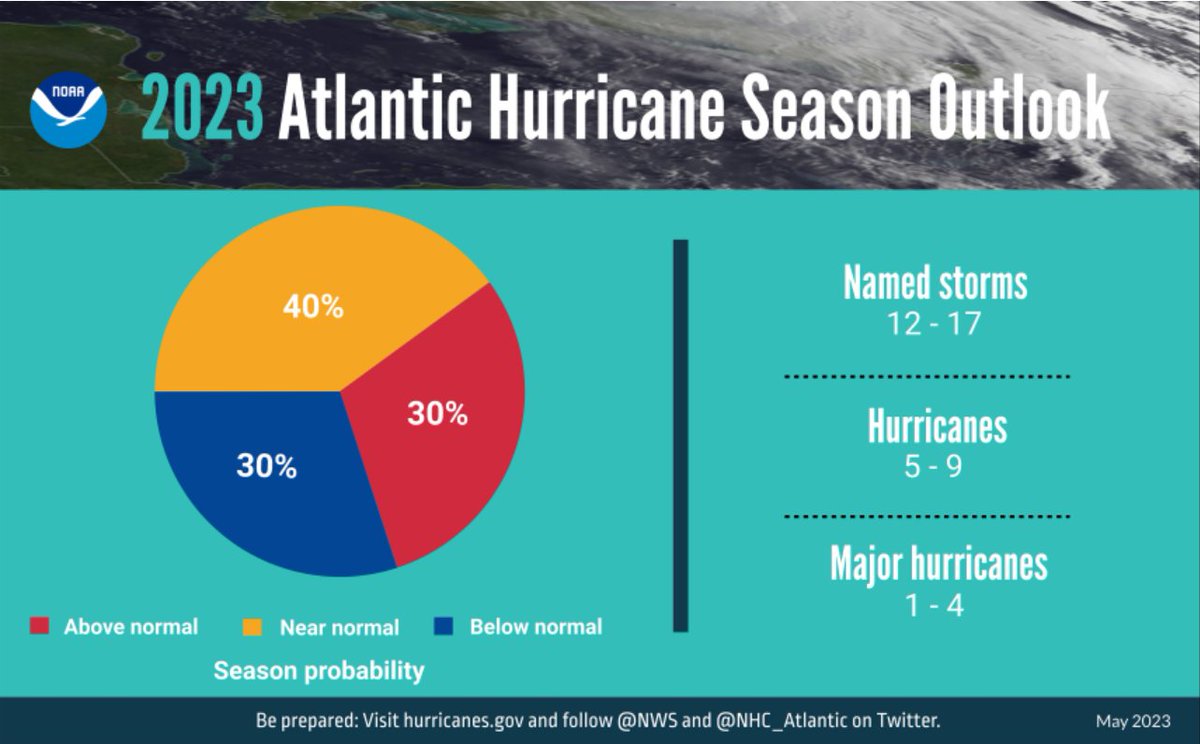
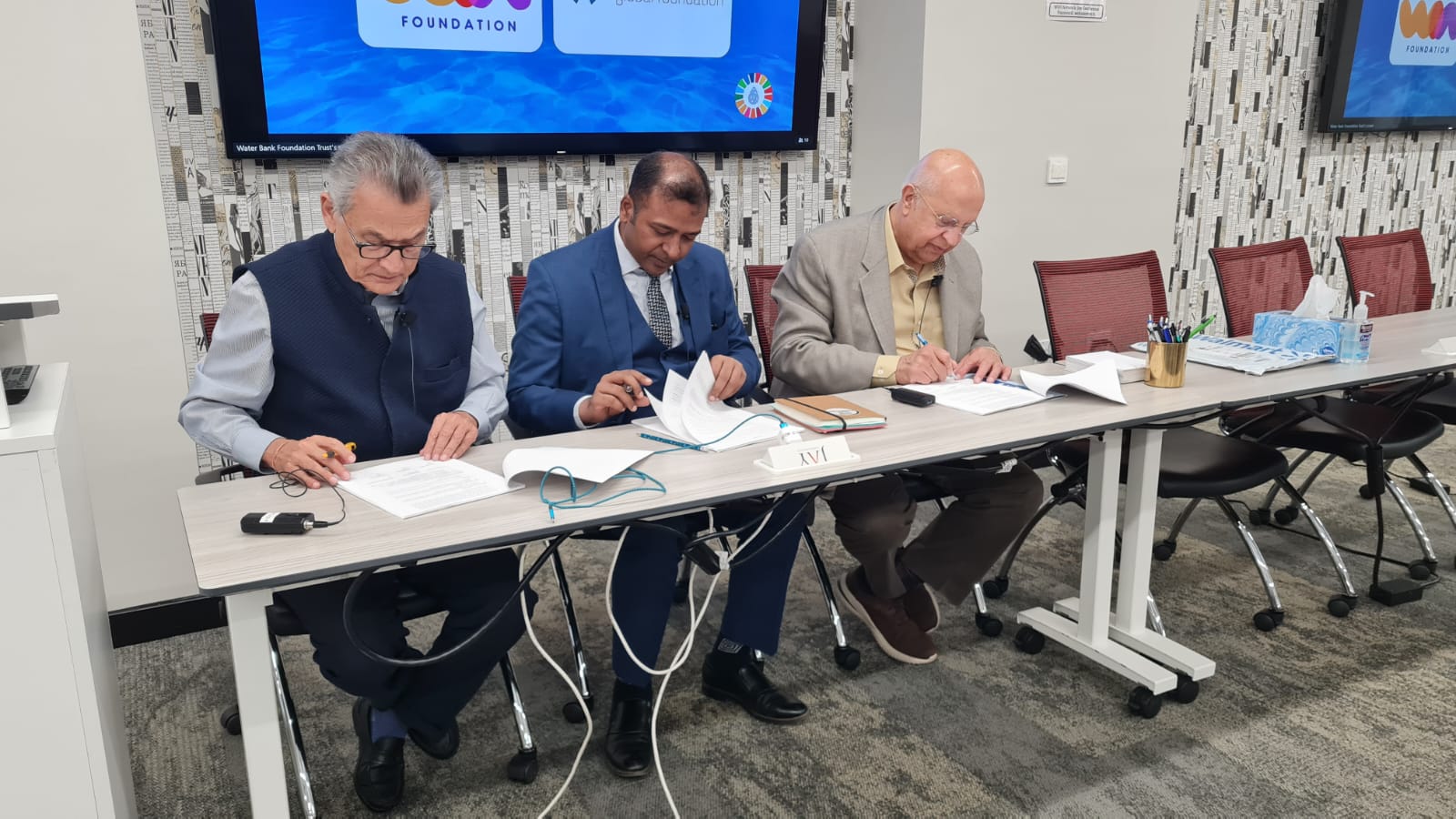
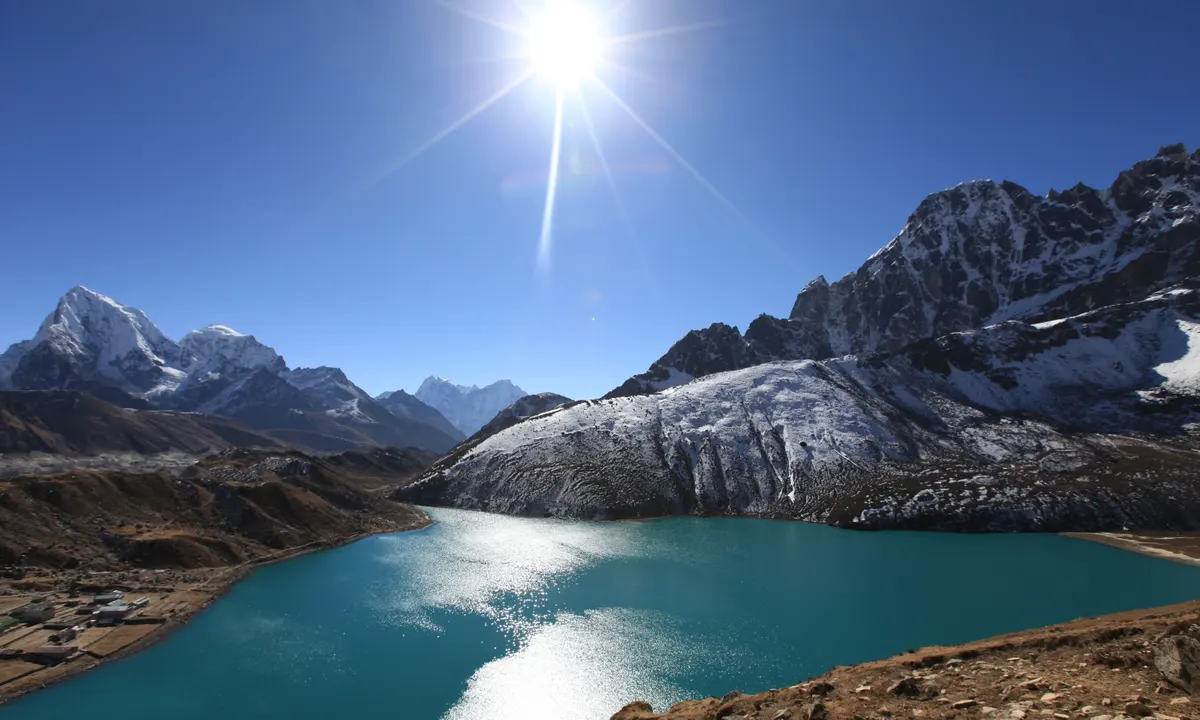
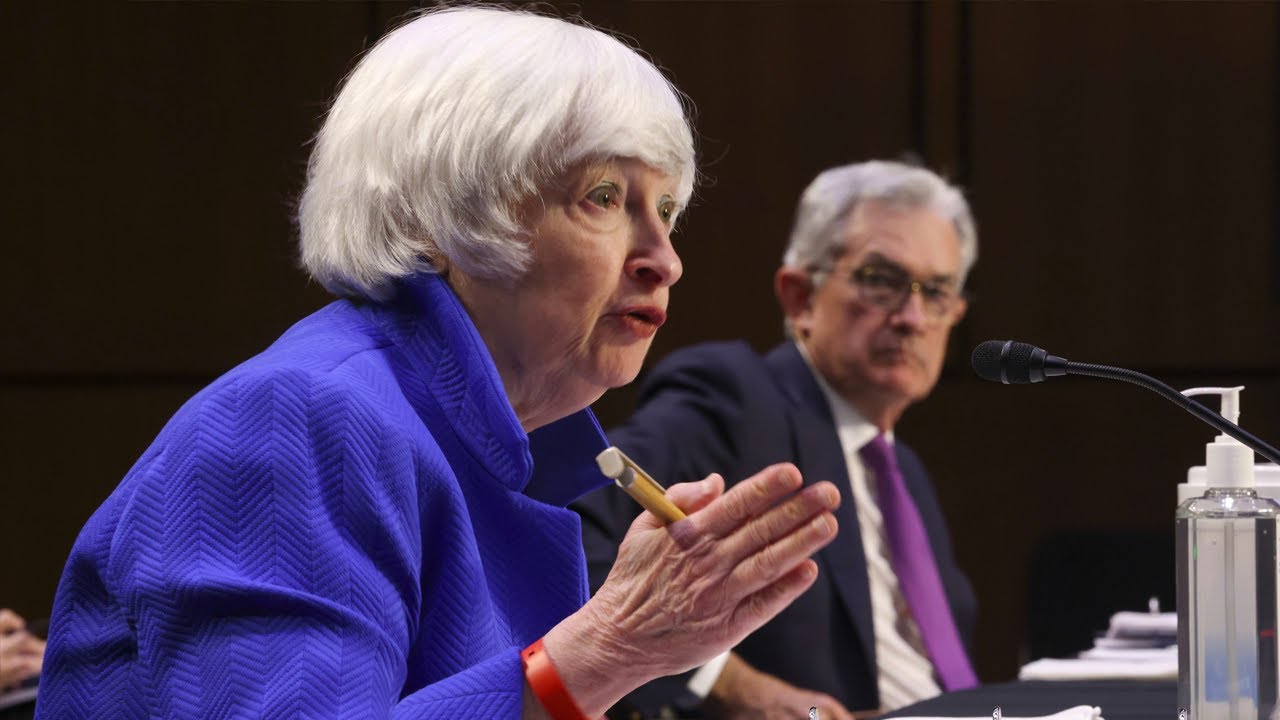


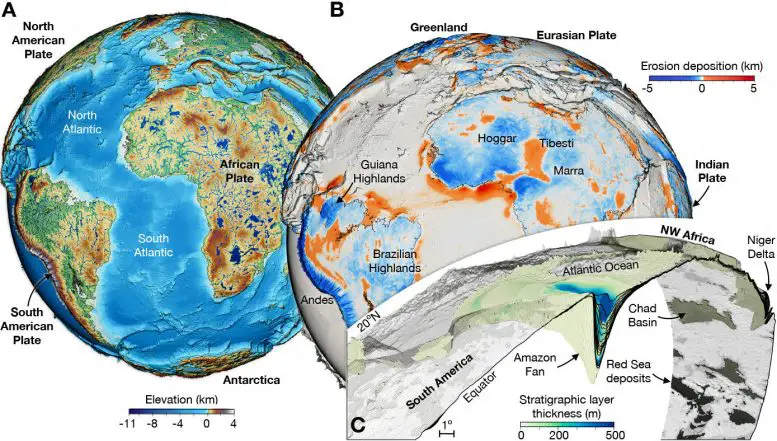

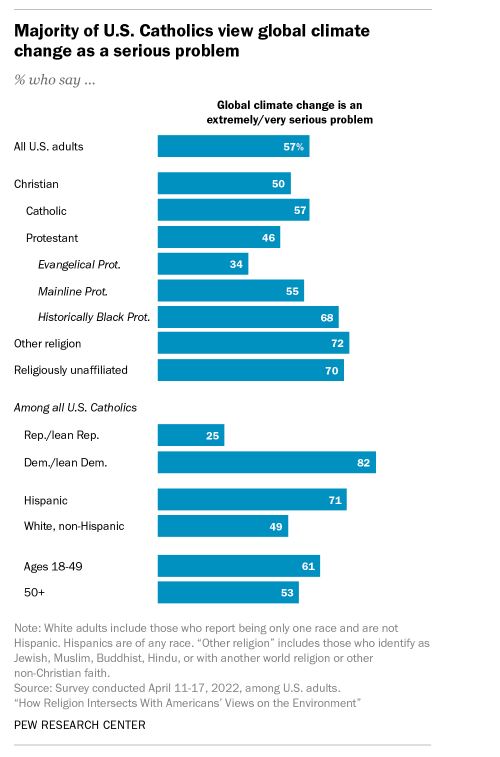
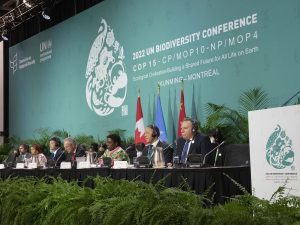

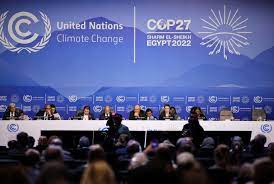
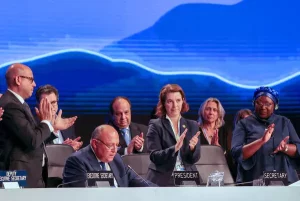
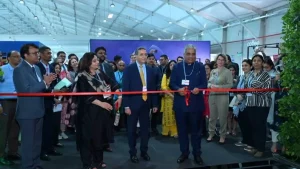

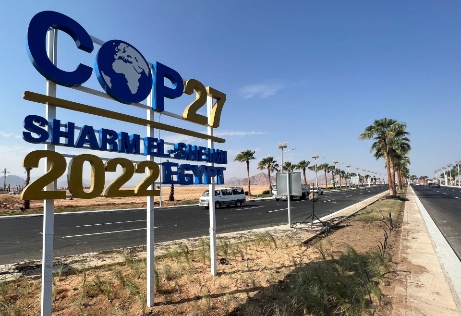


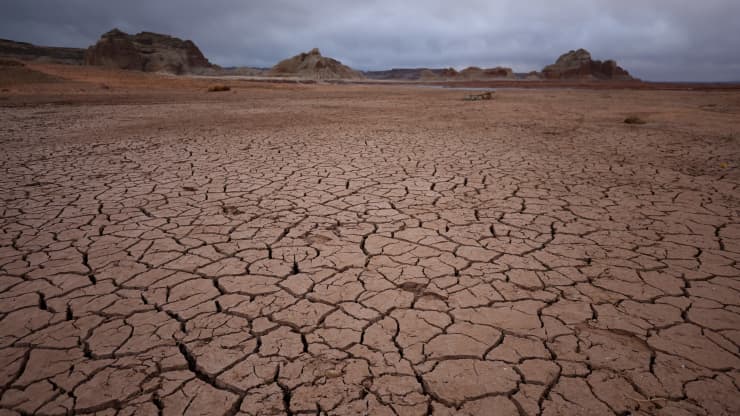 While the losses to the world is enormous, the impact on the US itself is even greater. Floods, drought, wildfires and hurricanes made worse by climate change could cost the U.S. federal budget about $2 trillion each year — a 7.1% loss in annual revenue — by the end of the century, the White House said in an assessment recently.
While the losses to the world is enormous, the impact on the US itself is even greater. Floods, drought, wildfires and hurricanes made worse by climate change could cost the U.S. federal budget about $2 trillion each year — a 7.1% loss in annual revenue — by the end of the century, the White House said in an assessment recently.  “Oceans are central in geopolitical balance of power,” said President of Portugal, Marcelo Rebelo de Sousa, in opening remarks. “Healthcare, economic resources, energy, mobility, migrations, scientific and technological development, climate change, all of this is present either in the context or in the outcome of a pandemic, of war and of crisis.”
“Oceans are central in geopolitical balance of power,” said President of Portugal, Marcelo Rebelo de Sousa, in opening remarks. “Healthcare, economic resources, energy, mobility, migrations, scientific and technological development, climate change, all of this is present either in the context or in the outcome of a pandemic, of war and of crisis.” “Our results tell a tale of two hemispheres. The north has seen major reductions in river sediment transport over the past 40 years, while the south has seen large increases over the same period,” says lead author Evan Dethier, a post-doctoral fellow at Dartmouth. “Humans have been able to alter the world’s biggest rivers at rates that are unprecedented in the recent geologic record.” Dethier says. “The amount of sediment rivers carry is generally dictated by natural processes in watersheds, like how much rain there is or whether there are landslides or vegetation. We find that direct human activities are overwhelming these natural processes, and even outweighing the effects of climate change.”
“Our results tell a tale of two hemispheres. The north has seen major reductions in river sediment transport over the past 40 years, while the south has seen large increases over the same period,” says lead author Evan Dethier, a post-doctoral fellow at Dartmouth. “Humans have been able to alter the world’s biggest rivers at rates that are unprecedented in the recent geologic record.” Dethier says. “The amount of sediment rivers carry is generally dictated by natural processes in watersheds, like how much rain there is or whether there are landslides or vegetation. We find that direct human activities are overwhelming these natural processes, and even outweighing the effects of climate change.”

 These idols are inexpensive and can be bought by all Kanta said, and added “Apart from Bhopal, I get orders from other places, including Pune and Delhi. People are really keen on buying these idols. Many people want to learn how to make them too.”
These idols are inexpensive and can be bought by all Kanta said, and added “Apart from Bhopal, I get orders from other places, including Pune and Delhi. People are really keen on buying these idols. Many people want to learn how to make them too.”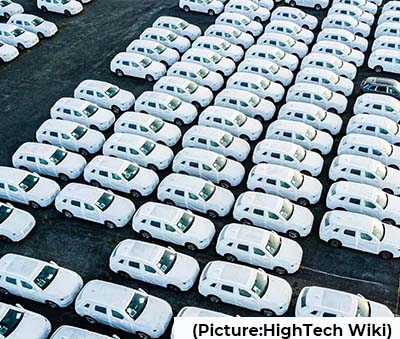 The new legislation is expected to help the EU achieve its target of cutting emissions from cars and light commercial vehicles by 100% by 2035 — when measured against the emissions in 2021. In fact, by 2030, while emissions from cars have to be reduced by 55%, those from vans need to be cut by 50%. According to the EC, cars and vans account for 12% and 2.5% of EU’s total carbon dioxide (CO2) emissions, respectively.
The new legislation is expected to help the EU achieve its target of cutting emissions from cars and light commercial vehicles by 100% by 2035 — when measured against the emissions in 2021. In fact, by 2030, while emissions from cars have to be reduced by 55%, those from vans need to be cut by 50%. According to the EC, cars and vans account for 12% and 2.5% of EU’s total carbon dioxide (CO2) emissions, respectively.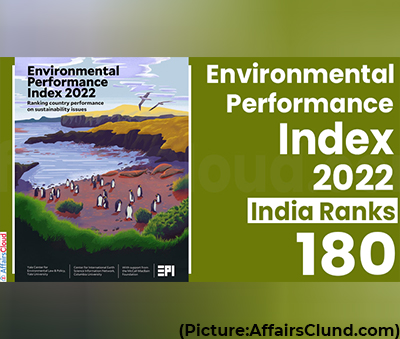 India ranked at the bottom with a total score of 18.9, while Denmark was the top scorer as the world’s most sustainable country. “…For the overall performance and ranking EPI, each country’s performance is viewed across numerous (18) categories like ecosystem vitality, biodiversity and habitat, ecosystem services and grassland loss. Unfortunately, India is consistently ranking either at the bottom or close to the bottom in almost all the categories, both regionally and globally,” as per a statement by EPI.
India ranked at the bottom with a total score of 18.9, while Denmark was the top scorer as the world’s most sustainable country. “…For the overall performance and ranking EPI, each country’s performance is viewed across numerous (18) categories like ecosystem vitality, biodiversity and habitat, ecosystem services and grassland loss. Unfortunately, India is consistently ranking either at the bottom or close to the bottom in almost all the categories, both regionally and globally,” as per a statement by EPI.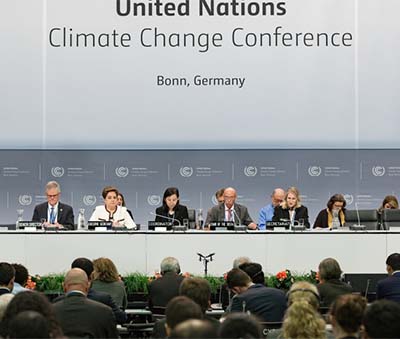 The UN’s top climate change official warned that climate change is progressing exponentially. With the world currently on track to more than double the 1.5 Celsius goal of the Paris Agreement by the end of the century, ambition must urgently be raised to avoid the worst impacts of climate change, and immediate action and progress in Bonn are needed.
The UN’s top climate change official warned that climate change is progressing exponentially. With the world currently on track to more than double the 1.5 Celsius goal of the Paris Agreement by the end of the century, ambition must urgently be raised to avoid the worst impacts of climate change, and immediate action and progress in Bonn are needed. ITC Classmate’s small but significant afforestation drive involving school students aims to complement the efforts of volunteers combating climate change at a local level. It has partnered with the Environmentalist Foundation of India, who have been invited by the Chengalpet district administration to create a forest patch at Vengadamangalam which is a fast-growing residential suburban pocket of Chennai and is witnessing contamination of land, water, and air with a profound shift in land use, growth, and ecology at large.
ITC Classmate’s small but significant afforestation drive involving school students aims to complement the efforts of volunteers combating climate change at a local level. It has partnered with the Environmentalist Foundation of India, who have been invited by the Chengalpet district administration to create a forest patch at Vengadamangalam which is a fast-growing residential suburban pocket of Chennai and is witnessing contamination of land, water, and air with a profound shift in land use, growth, and ecology at large. Einstein’s theory works well in explaining the way matter behaves on a large scale but clashes with the way quantum physics describes the gravity among the smallest observable particles. For years, Gionti has attempted to reconcile the two.
Einstein’s theory works well in explaining the way matter behaves on a large scale but clashes with the way quantum physics describes the gravity among the smallest observable particles. For years, Gionti has attempted to reconcile the two.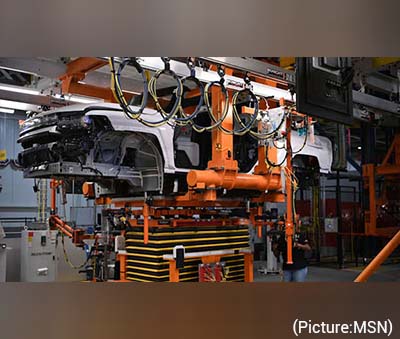 The move comes after the president in April invoked the Defense Production Act to
The move comes after the president in April invoked the Defense Production Act to 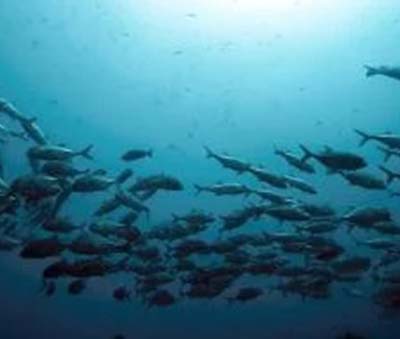 “We discovered this phenomenon by examining the similarity in ocean surface temperature from one year to the next as a simple metric for ocean memory,” said Hui Shi, lead author and researcher at the Farallon Institute in Petaluma, California. “It’s almost as if the ocean is developing amnesia.”
“We discovered this phenomenon by examining the similarity in ocean surface temperature from one year to the next as a simple metric for ocean memory,” said Hui Shi, lead author and researcher at the Farallon Institute in Petaluma, California. “It’s almost as if the ocean is developing amnesia.” Central to bitcoin’s technology is the process through which transactions are verified and then recorded on what’s known as the blockchain. Computers connected to the bitcoin network race to solve complex mathematical calculations that verify the transactions, with the winner earning newly minted bitcoins as a reward. Currently, when a machine solves the puzzle, its owner is rewarded with 6.25 bitcoins — worth about $260,000 total. The system is calibrated to release 6.25 bitcoins every 10 minutes.
Central to bitcoin’s technology is the process through which transactions are verified and then recorded on what’s known as the blockchain. Computers connected to the bitcoin network race to solve complex mathematical calculations that verify the transactions, with the winner earning newly minted bitcoins as a reward. Currently, when a machine solves the puzzle, its owner is rewarded with 6.25 bitcoins — worth about $260,000 total. The system is calibrated to release 6.25 bitcoins every 10 minutes.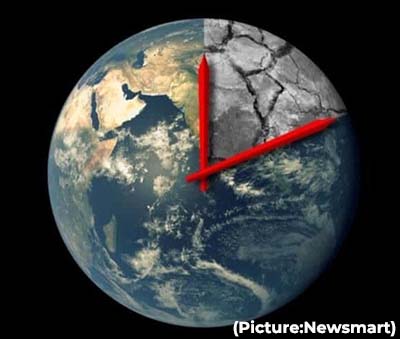 “It’s really, really, really hard to walk people back from that ledge,” Gill said. Doomism “is definitely a thing,” said Wooster College psychology professor Susan Clayton, who studies climate change anxiety and spoke at a conference in Norway last week that addressed the issue. “It’s a way of saying ‘I don’t have to go to the effort of making changes because there’s nothing I can do anyway.’”
“It’s really, really, really hard to walk people back from that ledge,” Gill said. Doomism “is definitely a thing,” said Wooster College psychology professor Susan Clayton, who studies climate change anxiety and spoke at a conference in Norway last week that addressed the issue. “It’s a way of saying ‘I don’t have to go to the effort of making changes because there’s nothing I can do anyway.’” The typical American, for instance, uses 16 times more electricity than the average Indian, according to data from the World Bank.
The typical American, for instance, uses 16 times more electricity than the average Indian, according to data from the World Bank.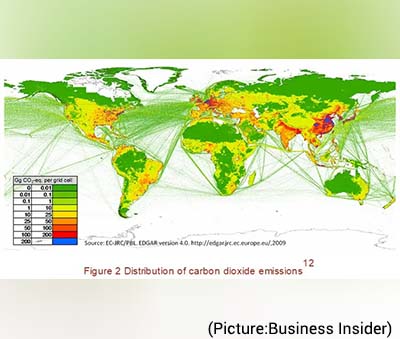 Commending the ambitious goals of 500 GW renewables by 2030 set by Prime Minister Narendra Modi at Glasgow (where the annual climate change summit was held in November 2021), Kerry said: “The criticality of achieving that goal was very simple. It is the only way that India itself becomes compliant with the 1.5 degrees goal, which we all ratified in Glasgow recently.”
Commending the ambitious goals of 500 GW renewables by 2030 set by Prime Minister Narendra Modi at Glasgow (where the annual climate change summit was held in November 2021), Kerry said: “The criticality of achieving that goal was very simple. It is the only way that India itself becomes compliant with the 1.5 degrees goal, which we all ratified in Glasgow recently.”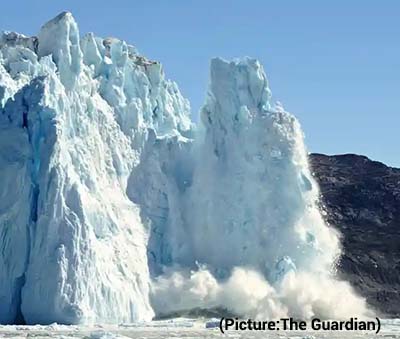 “The sublimation is like the drip from a leaking dam and the rapid ice loss is what happens when the dam breaks,” explained Mariusz Potocki, a glaciochemist and doctoral candidate in the Climate Change Institute, University of Maine, who collected the highest ice core.
“The sublimation is like the drip from a leaking dam and the rapid ice loss is what happens when the dam breaks,” explained Mariusz Potocki, a glaciochemist and doctoral candidate in the Climate Change Institute, University of Maine, who collected the highest ice core. Brijendra Singh, a 77-year-old tour guide, has shown visitors around the famed Khajuraho group of Hindu and Jain temples for 52 years.
Brijendra Singh, a 77-year-old tour guide, has shown visitors around the famed Khajuraho group of Hindu and Jain temples for 52 years. Both the leaders discussed taking forward the India US Climate Action and Finance Mobilisation Dialogue (CAFMD) through the four identified pillars, Climate Ambition, Finance Mobilisation, Adaptation and Resilience, and Forestry, a statement from the Environment, Forests and Climate Change Ministry said.
Both the leaders discussed taking forward the India US Climate Action and Finance Mobilisation Dialogue (CAFMD) through the four identified pillars, Climate Ambition, Finance Mobilisation, Adaptation and Resilience, and Forestry, a statement from the Environment, Forests and Climate Change Ministry said. We have learned that our Milky Way is one of 2 trillion known galaxies in the universe. Our galaxy alone has 200 billion stars and most of these stars appear to have planets. The probability of intelligent life somewhere in our galaxy or in another galaxy is high, given these numbers.
We have learned that our Milky Way is one of 2 trillion known galaxies in the universe. Our galaxy alone has 200 billion stars and most of these stars appear to have planets. The probability of intelligent life somewhere in our galaxy or in another galaxy is high, given these numbers. And this is why, I give back to the Himalayas by keeping them litter free and reintroducing a circular economy at the third pole of the world. A circular economy is possible only if we factor in the carrying capacity of our mountains, an aspect we often overlook. The never ending demands of tourists and dying belongingness of indigenous communities is adding fuel to the fire. I believe that local growth comes from locally sourced produce and local skills. Small is beautiful and sustainable – just think of homestays over luxury hotels for example!
And this is why, I give back to the Himalayas by keeping them litter free and reintroducing a circular economy at the third pole of the world. A circular economy is possible only if we factor in the carrying capacity of our mountains, an aspect we often overlook. The never ending demands of tourists and dying belongingness of indigenous communities is adding fuel to the fire. I believe that local growth comes from locally sourced produce and local skills. Small is beautiful and sustainable – just think of homestays over luxury hotels for example! This was the second time in weeks that India went against the tide to block a climate change-related proposal that it did not agree with. At the annual climate change conference in Glasgow last month, India had forced a last-minute amendment in the final draft agreement to ensure that a provision calling for “phase-out” of coal was changed to “phase-down”.
This was the second time in weeks that India went against the tide to block a climate change-related proposal that it did not agree with. At the annual climate change conference in Glasgow last month, India had forced a last-minute amendment in the final draft agreement to ensure that a provision calling for “phase-out” of coal was changed to “phase-down”. The new endeavour will base itself a short distance away from the original at Little Dome C, an area located roughly 40km from the Italian-French Concordia Station, on the east Antarctic plateau
The new endeavour will base itself a short distance away from the original at Little Dome C, an area located roughly 40km from the Italian-French Concordia Station, on the east Antarctic plateau “In India although about 60% of plastic is recycled, we are still seeing the damage that plastic pollution is causing,” Nadia Rasheed, Deputy Resident Representative, UNDP India, said in an interview at the Reuters Next conference broadcast on Friday.
“In India although about 60% of plastic is recycled, we are still seeing the damage that plastic pollution is causing,” Nadia Rasheed, Deputy Resident Representative, UNDP India, said in an interview at the Reuters Next conference broadcast on Friday. While those are noteworthy figures, there are other EVs that can match these figures in that price range (around $65,000 for the higher end Ocean). The real twist here is the base Ocean, called the Ocean Sport, that will use a smaller range battery (targeting around 250 miles of range), and a single-motor front wheel drive, that will start — before any state and local incentives —
While those are noteworthy figures, there are other EVs that can match these figures in that price range (around $65,000 for the higher end Ocean). The real twist here is the base Ocean, called the Ocean Sport, that will use a smaller range battery (targeting around 250 miles of range), and a single-motor front wheel drive, that will start — before any state and local incentives — 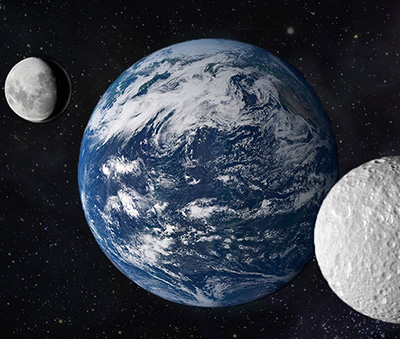 None of this means that Kamo’oalewa has to have especially exotic origins. The solar system is littered with asteroids, some of which are captured by the gravity of other planets and become more conventional—if fragmentary—moons. Others don’t orbit other planets in the common way but fall into line in front of them or behind them and pace them in their orbits around the sun, like the flocks of so-called Trojan asteroids that precede and trail Jupiter.
None of this means that Kamo’oalewa has to have especially exotic origins. The solar system is littered with asteroids, some of which are captured by the gravity of other planets and become more conventional—if fragmentary—moons. Others don’t orbit other planets in the common way but fall into line in front of them or behind them and pace them in their orbits around the sun, like the flocks of so-called Trojan asteroids that precede and trail Jupiter. Yet, despite these efforts, the fact is that we started out late in combating climate change and now need to accelerate corrective action if humans are not to go the way of the dinosaurs. The climate crisis is a global issue and requires action from all countries, but many developing economies, including some of the most climate-vulnerable ones, lack the financial wherewithal to do enough on their own. Some emerging economies, including South Africa and much of South and Southeast Asia, are hugely reliant on coal, and will have to undergo a disruptive green transition.
Yet, despite these efforts, the fact is that we started out late in combating climate change and now need to accelerate corrective action if humans are not to go the way of the dinosaurs. The climate crisis is a global issue and requires action from all countries, but many developing economies, including some of the most climate-vulnerable ones, lack the financial wherewithal to do enough on their own. Some emerging economies, including South Africa and much of South and Southeast Asia, are hugely reliant on coal, and will have to undergo a disruptive green transition.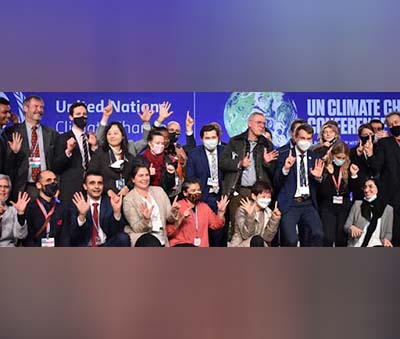 He even warned “It is time to go into emergency mode — or our chance of reaching net zero will itself be zero.” At the same time, Secretary-General’s rather confusing, ill-composed comment in his remarks at the conclusion of COP 26 that “We are still knocking on the door of climate catastrophe” left many wondering what he was trying to convey.
He even warned “It is time to go into emergency mode — or our chance of reaching net zero will itself be zero.” At the same time, Secretary-General’s rather confusing, ill-composed comment in his remarks at the conclusion of COP 26 that “We are still knocking on the door of climate catastrophe” left many wondering what he was trying to convey. “What we’re looking at here is the potential extinction of a whole environment,” said Watson, who specializes in marine social-ecological systems and understanding complex adaptive systems. “In some places, the environments we have today are not going to exist in the future. We won’t be able to go visit them or experience them. It is an environmental, cultural and economic loss we can’t replace.”
“What we’re looking at here is the potential extinction of a whole environment,” said Watson, who specializes in marine social-ecological systems and understanding complex adaptive systems. “In some places, the environments we have today are not going to exist in the future. We won’t be able to go visit them or experience them. It is an environmental, cultural and economic loss we can’t replace.” Congratulating the filmmakers, the Union Minister, said, “You all have attempted and struggled to bring stories from the remote corners of the country. Now, content is king and if you create the right content, it will go not only National but to the International level. We have the talent among us and with all your help; we will take IFFI to new heights”. He also remembered Late Manohar Parrikar, who was instrumental in bringing IFFI to Goa’s shores.
Congratulating the filmmakers, the Union Minister, said, “You all have attempted and struggled to bring stories from the remote corners of the country. Now, content is king and if you create the right content, it will go not only National but to the International level. We have the talent among us and with all your help; we will take IFFI to new heights”. He also remembered Late Manohar Parrikar, who was instrumental in bringing IFFI to Goa’s shores.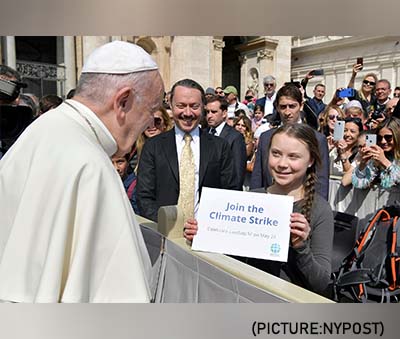 Francis expressed thanks “for all those times when you cultivate the dream of fraternity, work to heal the wounds of God’s creation, fight to ensure respect for the dignity of the vulnerable and spread the spirit of solidarity and sharing.”
Francis expressed thanks “for all those times when you cultivate the dream of fraternity, work to heal the wounds of God’s creation, fight to ensure respect for the dignity of the vulnerable and spread the spirit of solidarity and sharing.” Vihaan, 17, and his 14-year-old brother, Nav, were handed the International Children’s Peace Prize by Indian Nobel Peace Prize laureate Kailash Satyarthi at a ceremony in The Hague, Netherlands.
Vihaan, 17, and his 14-year-old brother, Nav, were handed the International Children’s Peace Prize by Indian Nobel Peace Prize laureate Kailash Satyarthi at a ceremony in The Hague, Netherlands.  This amendment reportedly came as a result of consultations among India, China, the UK and the US. The phrase “phase down” figures in the US-China Joint Declaration on Climate Change, announced on November 10. As the largest producer and consumer of coal and coal-based thermal power, it is understandable that China would prefer a gradual reduction rather than total elimination. India may have had similar concerns. However, it was inept diplomacy for India to move the amendment and carry the can rather than let the Chinese bell the cat. The stigma will stick and was unnecessary.
This amendment reportedly came as a result of consultations among India, China, the UK and the US. The phrase “phase down” figures in the US-China Joint Declaration on Climate Change, announced on November 10. As the largest producer and consumer of coal and coal-based thermal power, it is understandable that China would prefer a gradual reduction rather than total elimination. India may have had similar concerns. However, it was inept diplomacy for India to move the amendment and carry the can rather than let the Chinese bell the cat. The stigma will stick and was unnecessary.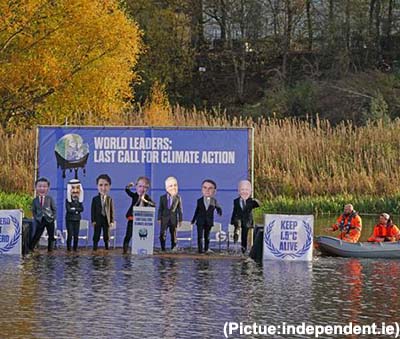 In a significant move, countries would urge one another to “accelerate the phasing out of coal and subsidies for fossil fuels” in the draft, though it has no explicit reference to ending the use of oil and gas. There has been a big push among developed nations to shut down coal-fired power plants, which are a major source of heat-trapping gases, but the fuel remains a critical and cheap source of electricity for countries like China and
In a significant move, countries would urge one another to “accelerate the phasing out of coal and subsidies for fossil fuels” in the draft, though it has no explicit reference to ending the use of oil and gas. There has been a big push among developed nations to shut down coal-fired power plants, which are a major source of heat-trapping gases, but the fuel remains a critical and cheap source of electricity for countries like China and  In India, a small part of Arunachal Pradesh and Assam will experience the partial eclipse, and those from Uttar Pradesh, Bihar, Jharkhand can see the end part of the penumbral eclipse. A penumbral lunar eclipse takes place when the Moon, Sun, and Earth are imperfectly aligned and the Moon moves through the outer part of Earth’s shadow called the penumbra.
In India, a small part of Arunachal Pradesh and Assam will experience the partial eclipse, and those from Uttar Pradesh, Bihar, Jharkhand can see the end part of the penumbral eclipse. A penumbral lunar eclipse takes place when the Moon, Sun, and Earth are imperfectly aligned and the Moon moves through the outer part of Earth’s shadow called the penumbra.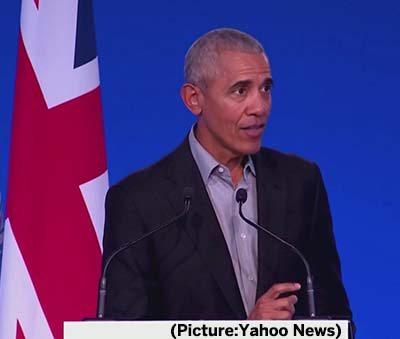 The 44th U.S. president commended the private sector’s push to set net-zero emissions targets and also touted emissions reductions targets set in the U.K. and the European Union, while pointing out the absence of Chinese and Russian leaders from the summit.
The 44th U.S. president commended the private sector’s push to set net-zero emissions targets and also touted emissions reductions targets set in the U.K. and the European Union, while pointing out the absence of Chinese and Russian leaders from the summit.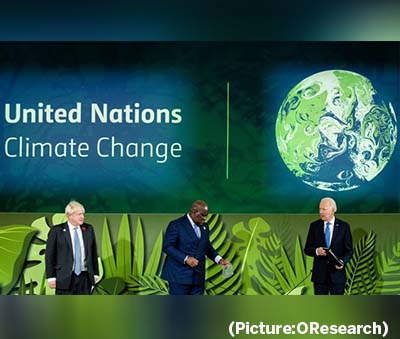 Despite the fact that the
Despite the fact that the According to analysts, Methane emission reductions from oil and gas production are the low-hanging fruit of the climate crisis: easy to fix with existing technology, and easy to track. Methane is the principal component of the natural gas used for cooking, heating and energy generation.
According to analysts, Methane emission reductions from oil and gas production are the low-hanging fruit of the climate crisis: easy to fix with existing technology, and easy to track. Methane is the principal component of the natural gas used for cooking, heating and energy generation.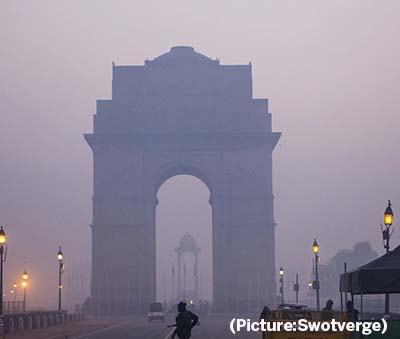 The
The  As Biden struggles to pass significant climate legislation at home ahead of next week’s U.N. climate summit, the new AP-NORC/EPIC poll also shows that 55% of Americans want Congress to pass a bill to ensure that more of the nation’s electricity comes from clean energy and less from climate-damaging coal and natural gas.
As Biden struggles to pass significant climate legislation at home ahead of next week’s U.N. climate summit, the new AP-NORC/EPIC poll also shows that 55% of Americans want Congress to pass a bill to ensure that more of the nation’s electricity comes from clean energy and less from climate-damaging coal and natural gas. To improve climate simulations, scientists are looking to the potential of artificial intelligence (AI). AI has offered profound insights in fields from materials science to manufacturing, and climate researchers are excited to explore how AI can be used to revolutionize how the Earth system, and especially its water cycle, can be simulated in order to dramatically improve our understanding and representation of the real world. In particular, AI offers the potential to dramatically increase the accuracy of predictions down to the scales of interest to scientists, and even stakeholders focused on designing, financing and deploying equitable climate solutions to America’s most disadvantaged communities.
To improve climate simulations, scientists are looking to the potential of artificial intelligence (AI). AI has offered profound insights in fields from materials science to manufacturing, and climate researchers are excited to explore how AI can be used to revolutionize how the Earth system, and especially its water cycle, can be simulated in order to dramatically improve our understanding and representation of the real world. In particular, AI offers the potential to dramatically increase the accuracy of predictions down to the scales of interest to scientists, and even stakeholders focused on designing, financing and deploying equitable climate solutions to America’s most disadvantaged communities. In the northern part of the state, drenching rains caused widespread flooding and rock slides over the weekend. Strong winds knocked down trees and even toppled two big rigs on the Richmond-San Rafael Bridge near San Francisco. Pacific Gas & Electric reported that 380,000 homes and businesses lost power, though most had it back Monday.
In the northern part of the state, drenching rains caused widespread flooding and rock slides over the weekend. Strong winds knocked down trees and even toppled two big rigs on the Richmond-San Rafael Bridge near San Francisco. Pacific Gas & Electric reported that 380,000 homes and businesses lost power, though most had it back Monday. With temperatures rising and extreme weather occurring across the globe, all eyes at the 2021 United Nations Climate Change Conference will be on China, the leading producer of greenhouse gases, and the United States, the largest emitter both historically and on a per capita basis.
With temperatures rising and extreme weather occurring across the globe, all eyes at the 2021 United Nations Climate Change Conference will be on China, the leading producer of greenhouse gases, and the United States, the largest emitter both historically and on a per capita basis. As per the long history cut short; Mullaperiyar dam was built in the late 1800s in the princely state of Travancore (present-day Kerala) and given to British-ruled Madras Presidency on a 999-year lease in 1886. The agreement granted full rights to the secretary of state of Tamil Nadu, a British official, to construct irrigation projects on the land. The dam was built to divert a part of the west-flowing Periyar river eastwards to feed the arid areas of Tamil Nadu. Now there is no princely state or British rule, so better forget about the 999 year lease. Only thing we need to care is the safety and fraternity among neighboring states and mutual help by each other.
As per the long history cut short; Mullaperiyar dam was built in the late 1800s in the princely state of Travancore (present-day Kerala) and given to British-ruled Madras Presidency on a 999-year lease in 1886. The agreement granted full rights to the secretary of state of Tamil Nadu, a British official, to construct irrigation projects on the land. The dam was built to divert a part of the west-flowing Periyar river eastwards to feed the arid areas of Tamil Nadu. Now there is no princely state or British rule, so better forget about the 999 year lease. Only thing we need to care is the safety and fraternity among neighboring states and mutual help by each other. The research updates a similar 2013 paper revealing that 97% of studies published between 1991 and 2012 supported the idea that human activities are altering Earth’s climate. The current survey examines the literature published from 2012 to November 2020 to explore whether the consensus has changed.
The research updates a similar 2013 paper revealing that 97% of studies published between 1991 and 2012 supported the idea that human activities are altering Earth’s climate. The current survey examines the literature published from 2012 to November 2020 to explore whether the consensus has changed. The study, “
The study, “